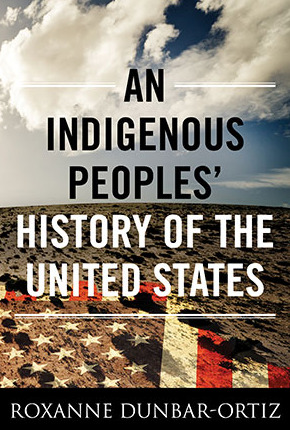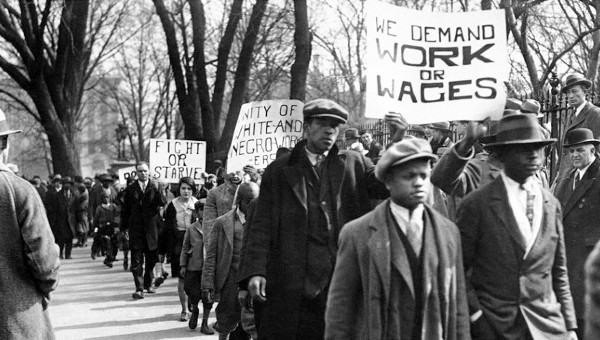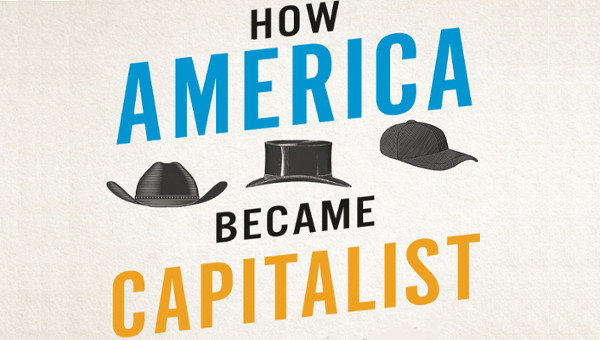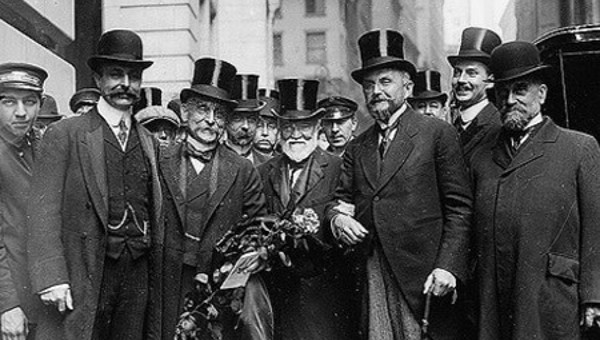Rob Albritton interviews Roxanne Dunbar-Ortiz
Roxanne Dunbar-Ortiz’s An Indigenous Peoples History of the United States (Boston: Beacon Press, 2014) presents a much needed history of the United States as a settler colonial-state from the perspective of Indigenous Peoples. In it she argues: “The form of colonialism that the Indigenous peoples of North America have experienced was modern from the beginning: the expansion of European corporations, backed by government armies, into foreign areas, with subsequent expropriation of lands and resources. Settler colonialism is a genocidal policy. Native nations and communities, while struggling to maintain fundamental values and collectivity, have from the beginning resisted modern colonialism using both defensive and offensive techniques, including the modern forms of armed resistance of national liberation movements and what now is called terrorism.”
She will be participating in a roundtable discussion of this work at York University, Toronto, on October 6 (see video). Roxanne has combined a distinguished academic career with a long history of involvement in social struggles, both locally and globally. The Bullet recently asked Rob Albritton to interview Roxanne on her involvement in the Indigenous Human Rights movement and, in particular, her involvement in the development of the United Nations Declaration of the Rights of Indigenous Peoples.
Rob Albritton is Professor Emeritus at York University and author of Let Them Eat Junk, A Japanese Reconstruction of Marxist Theory, among others.
Roxanne Dunbar-Ortiz is author of Outlaw Woman, Red Dirt, The Great Sioux Nation, among others.
Rob Albritton (RA): Why at a particular time in your life did you decide to contribute to “The United Nations Declaration of the Rights of Indigenous Peoples”?
Roxanne Dunbar-Ortiz (RDO): As a graduate student at UCLA in the mid-1960s, I was active in the antiwar movement on campus, as well as in anti-racist/anti-apartheid work. I left graduate school in 1967, with only my dissertation remaining due and devoted five years of full time radical organizing, focused on building an anti-imperialist women’s liberation movement. I returned to the dissertation at the time of the Wounded Knee siege, and in its wake volunteered with the Wounded Knee legal defense, then with the International Indian Treaty Council. The historic decade, 1972-1982, marked for me a life-changing involvement in the initiation of the presence of Indigenous representatives at the United Nations and the emergence of international human rights law norms.
 In 1972-74, during a period of writing my History doctoral dissertation and at the same time attending law school, as well as being active in the local San Francisco Bay Area American Indian Movement (AIM) chapter, the Indigenous movement in North America galvanized global attention and support, culminating in a nearly two-month occupation of the hamlet of Wounded Knee, located in the Pine Ridge Sioux reservation in South Dakota, the site of the 1890 U.S. army massacre of hundreds of unarmed Sioux refugees. The chief demand of the hundreds of occupiers, who were surrounded by armed federal and state troops with their tanks and aircraft, concerned the Sioux-United States Treaty of 1868, which guaranteed Sioux sovereignty over a large contiguous land base that had been reduced to small, separate reservations by illegal federal annexations, as well as erosion of Sioux governmental sovereignty.
In 1972-74, during a period of writing my History doctoral dissertation and at the same time attending law school, as well as being active in the local San Francisco Bay Area American Indian Movement (AIM) chapter, the Indigenous movement in North America galvanized global attention and support, culminating in a nearly two-month occupation of the hamlet of Wounded Knee, located in the Pine Ridge Sioux reservation in South Dakota, the site of the 1890 U.S. army massacre of hundreds of unarmed Sioux refugees. The chief demand of the hundreds of occupiers, who were surrounded by armed federal and state troops with their tanks and aircraft, concerned the Sioux-United States Treaty of 1868, which guaranteed Sioux sovereignty over a large contiguous land base that had been reduced to small, separate reservations by illegal federal annexations, as well as erosion of Sioux governmental sovereignty.
The leadership that formed, along with a number of international law specialists guided by Sioux attorney and best-selling author, Vine Deloria, Jr., formulated a set of demands that called on the international community for intervention and international law to be applied. The following year, 1974, five thousand Indigenous representatives from many parts of the world representing more than ninety Indigenous communities met and founded the International Indian Treaty Council (IITC). This was the context that brought me to the United Nations, initially working with the legal team and serving as an expert witness in U.S. federal court challenges.
The 2007 UN Declaration originated in preparations for the UN NGO 1977 conference on Indigenous Peoples of the Americas, which was convened at UN headquarters in Geneva, Switzerland. The International Indian Treaty Council initiated the conference. At the same time I was a fulltime university faculty member, I was a volunteer staff member of the IITC and involved in organizing the Indigenous delegations from North America. For three years, working together with international nongovernmental organizations such as the World Council of Churches, the Women’s International League for Peace and Freedom, and the Afro-Asian Peoples’ Solidarity Organization, among many others, this historic conference marked the beginning of the International Indigenous movement, and thirty years later the UN General Assembly passed the official declaration.
RA: How did you prepare yourself for this work?
RDO: There was no formal channel through which to learn the international work. Only the IITC director, Jimmie Durham, had experience with the UN human rights apparatus and with related international non-governmental organizations, as he had lived in Geneva while his wife worked for the World Council of Churches there. Funding was a huge problem. The IITC eschewed all government support and sought to affiliate with national liberation movements and the Non-Aligned Movement (NAM), which had the favour of the “Eastern” bloc, that is, the Soviet Union and other socialist states. The 1976 election of Jimmy Carter as president of the United States signaled to the world that human rights would be used as a propaganda weapon against the Soviet Union as the policy of détente cooled the rattling of nuclear weapons. The year before, in August 1975, the Helsinki Declaration came out of the “The Final Act of the Conference on Security and Co-operation in Europe” that was signed by thirty-five European states along with Canada and the United States, proclaiming the right of all peoples to determine their internal and external political status. Principle VII required respect for human rights and fundamental freedoms, including the freedom of thought, conscience, religion or belief; and Principle X required fulfillment in good faith of obligations under international law. Highly publicized by Jimmy Carter in his campaign for president, IITC members took notice and pointed to a century of suppression of Native American political, economic, social and cultural freedoms, and religions, as well as violations of treaty agreements with Indigenous nations.
Between its establishment in 1974 and gaining NGO status in the UN in 1977, the IITC secured an office across from UN headquarters in New York, and another in San Francisco, which I helped develop. The main work was, and remains, grass-roots organizing. IITC staff organized numerous activities in preparation for its international role by informing Native people all over North America, particularly the traditional elders, holding seminars on international law, assisted by well-known international lawyers, such of Richard Falk. IITC began participating in UN organized meetings – the 1975 International Women’s Year Conference in Mexico, the 1976 UN Habitat Conference in Vancouver, and the 1977 UN Conference on Desertification in Buenos Aires, as well as a conference of non-aligned countries in Peru in 1976. Through these interactions, the IITC made Indigenous peoples’ situations and movements visible, as well as getting acquainted with other NGOs, government representatives, and UN procedures and culture.
RA: Can you briefly describe the process and the participants?
RDO: The more than one hundred Indigenous representatives from all over the western hemisphere who gathered 21-23 September 1977 for the officially titled “International NGO Conference on Discrimination Against Indigenous Populations in the Americas-1977” reflected organized forces of inestimable dimensions and dazzled the international community and press (without a line or mention in the U.S. media). We were even welcomed and embraced by the Swiss citizens of Geneva who normally ignored, and even resented, UN doings. Jimmie Durham had made many friends in Geneva during his time living there, and he had organized a Swiss support group, INCOMINDIOS, established by Swiss lawyer Alexander Weber, and which still exists today. Two well known Swiss anthropologists, Louis Necker and Rene Fuerst, were part of the support network Durham had built in Geneva, which included Pearl Grobet, Jacqueline De Puy, Isabelle Schulte-Tenckhoff, Sidney Lamb, Lee Weingarten, and others they recruited to do everything – driving us around, making copies of documents, translating and interpreting, finding housing, as well as staying with the work afterwards. Following the conference, a documentation centre was established by the Swiss supporters to house all the documents submitted during the conference and to remain a resource centre. The Geneva government provided funds for the Documentation Centre for Indigenous Peoples (DOCIP), which also continues to have a vital and enlarged existence and role.
But, it was a local Geneva angle that made the event riveting to the citizens of Geneva. In the early 1920s, the Iroquois diplomat, Deskaheh, had been sent by the Haudenosaunee Six Nations of the Iroquois in North America to approach the newly established League of Nations for recognition and membership. Although Deskaheh never achieved that goal, his presence for several years in Geneva became the stuff of legend and the city’s history, known to every school child for generations. Conference delegates included Deskaheh’s descendants. Geneva officials rolled out the red carpet with a formal reception and museum exhibit.
The chair of the conference was Edith Ballantyne, the General Secretary of the Women’s International League for Peace and Freedom and president of the Conference of NGOs in Consultative Status with ECOSOC (CONGO). The other officers, all officers of the Geneva Special NGO Committee on Human Rights and its Sub-Committee on Racism, Racial Discrimination, Apartheid and Decolonization, were Niall MacDermot, Secretary General of the International Commission of Jurists; Romesh Chandra, Secretary General of the World Peace Council; Rolande Gaillard, the International Council of Women; Lars-Gunnar Eriksson, International University Exchange Fund; I. Matéla, World Federation of Democratic Youth; and Abderrahmen Youssoufi, Arab Lawyers Union. The United Nations was represented by the Director of the Human Rights Division, Theo C. van Boven, who had that year assumed the post, along with Augusto Willemsen-Diaz, the Human Rights Division specialist on Indigenous issues, and Lee Swepston, from the International Labour Office (ILO) Department of International Labour Standards. Three other UN bodies sent representatives: United Nations High Commissioner for Refugees (UNHCR); the United Nations Institute for Training and Research (UNITAR); and the United Nations Educational, Scientific and Cultural Organization (UNESCO).
Forty non-governmental organizations with UN status attended the conference, thanks to Jimmie Durham’s close collaboration with the Conference of NGOS for several years. Twenty-seven governments sent representative to the conference; the Carter administration even sent two prestigious Indigenous individuals, attorney Kirk Kickingbird and Shirley Hill Witt, which did not sit well with IITC organizers, particularly attorney Tim Coulter who was on the staff of Institute for the Development of Indian Law with Kickingbird and had not been informed that he would be representing the U.S. government at the conference. Despite it’s involvement with the founding and support of the WCIP, the government of Norway provided funding to the NGO Sub-Committee for the conference. Although a few individuals associated with WCIP were present as observers, including George Manual representing the National Indian Brotherhood of Canada, the WCIP did not send a formal delegation; José Carlos Morales from Costa Rica, who would later become WCIP president, was a delegate representing a national organization. There were Indigenous delegates from fifteen countries of the Western Hemisphere, some in exile from military dictatorships, such as Antonio Milape of the Mapuche Confederation in exile and Nilo Cayuqueo and Juan Jacinto Navarro from Argentina.
Mario Ibarra, a young Chilean militant who had been detained, tortured, and imprisoned after the 1973 military coup, had been allowed to leave a Chilean prison for what turned out to be permanent exile in Geneva, arriving just before the 1977 conference. At the end of the conference he volunteered to be the Geneva representative for the IITC while he pursued his studies at the Geneva Institute. In the early years following the conference, Mario was the only person representing Indigenous issues on a day to day basis during the periods between the two annual human rights meetings where at first only a few of us were present.
The conference formulated a programme of action for NGOs with recommendations to submit all documents to divisions of the United Nations. The conference documentation was formally submitted to the UN Secretary-General and to the President of the UN General Assembly in November 1977. The twelfth of October (Columbus Day) was declared “International Day of Solidarity and Mourning with Indigenous Peoples of the Americas,” with a view to the establishment of a day of solidarity by the UN. The recommendations included a call for respect for traditional law and customs, and for unrestricted rights of land ownership, as well as Indigenous control over natural resources in their territories. The conference found that Indigenous peoples in the Americas have the right to own land communally and manage it according to their traditions, and that such ownership must be recognized and protected in international as well as national laws. Governments of all the American states were called upon to ratify the UN conventions on Genocide, Anti-Slavery, Elimination of all Forms of Racial Discrimination, the twin Covenants on Civil and Political Rights and on Economic, Social and Cultural Rights, as well as the American Convention on Human Rights; and that the ILO Convention 107 on Tribal and Indigenous Populations be revised to remove the emphasis on integration as the main approach to Indigenous problems and to reinforce the provisions in the Convention for special measures in favour of Indigenous peoples. A recommendation was made to establish a Working Group on Indigenous Peoples in the Sub-Commission of the UN Commission on Human Rights, which we achieved in 1981, meeting for the first time in 1982.
In all night sessions, the Indigenous participants hammered out a document that they submitted collectively. This document, entitled “Draft Declarations of Principles for the Defence of the Indigenous nations and Peoples of the Western Hemisphere,” represents the dominant theme of the conference and set the basis for subsequent UN negotiations regarding the question of Indigenous peoples. This initial declaration contained thirteen brief and unequivocal statements of Indigenous rights that formed the basis for the official UN Declaration three decades later.
RA: Why is this declaration important?
RDO: A UN General Assembly declaration is a consensus document, stating minimum standards, as well as aspirations. Representatives of Indigenous Peoples from all over the world were deeply involved in the thirty years of negotiations, while at the same time demanding and winning important institutional infrastructure in the UN system, such as the Working Group, the Permanent Forum on Indigenous Issues, and the Voluntary Fund through which to facilitate this work. Although a declaration is not a treaty and has no inherent force in international law, some UN declarations, without even leading to formal treaties, have achieved the status of jus cogens, or international common law, such as the 1948 UN Declaration on Human Rights and the 1960 UN Declaration on Decolonization.
Also, the Declaration is an excellent organizing and educational tool in mobilizing both Indigenous communities’ support and participation as well as gaining support of institutions within the settler states, such as local governments, religious bodies, labour unions, non-governmental organizations, and universities.
RA: The United Nations Declaration of the Rights of Indigenous Peoples consists of 46 articles. Are there some that are particularly important in your opinion?
RDO: The Declaration is not perfect in that it does not reflect the maximum demands of Indigenous Peoples, and some provisions are blurry or watered down. But, it is also a beautifully designed document. Having been present from the beginning of this process and into the final negotiations after 2000, I can attest that Indigenous Peoples’ representatives demonstrated remarkable diplomatic skills and mastery of the process. With five centuries of survival of colonialism at their backs, they were not willing to compromise their future for a useless, feel good document. So, every article is sculpted for a specific purpose and with intention.
“Indigenous peoples have the right to self-determination. By virtue of that right they freely determine their political status and freely pursue their economic, social and cultural development.”
The most important article, without which all the others would be irrelevant, is Article 3: Indigenous peoples have the right to self-determination. By virtue of that right they freely determine their political status and freely pursue their economic, social and cultural development.
There would have been a declaration by 1992, if not earlier, had Indigenous Peoples’ representatives not insisted on this article. It is also the reason that the four primary Anglo settler states – the United States, Canada, New Zealand, and Australia – voted against the Declaration initially, and lobbied economically dependent states to do so, without success. Within two years, even the Anglo settler-states had approved the Declaration but with stated limitations on the definition of self-determination in international law, also asserting every time they speak about it that it has no weight in international law.
Article 8 is extremely important and alludes to historic genocides, as well as ongoing states’ policies that could lead to genocide:
1. Indigenous peoples and individuals have the right not to be subjected to forced assimilation or destruction of their culture.
2. States shall provide effective mechanisms for prevention of, and redress for:
(a) Any action which has the aim or effect of depriving them of their integrity as distinct peoples, or of their cultural values or ethnic identities;
(b) Any action which has the aim or effect of dispossessing them of their lands, territories or resources;
(c) Any form of forced population transfer which has the aim or effect of violating or undermining any of their rights;
(d) Any form of forced assimilation or integration;
(e) Any form of propaganda designed to promote or incite racial or ethnic discrimination directed against them.
Closely related to Article 8, but emphasized as distinctive is Article 10: Indigenous peoples shall not be forcibly removed from their lands or territories. No relocation shall take place without the free, prior and informed consent of the indigenous peoples concerned and after agreement on just and fair compensation and, where possible, with the option of return.
RA: How can a list of UN rights be used, given that the UN has limited powers of enforcement and given the history of nation-states frequent and extreme violation of the rights of indigenous people?
RDO: What Indigenous Peoples have achieved at the UN in thirty years should be cause for optimism. They had no bargaining chips or armies, nothing to offer, demanding the best of human beings, which states are made up of, appealing to the consciences, ethics, and responsibilities, of state actors. The United Nations is a flawed and limited phenomenon, but it embodies an organic aspect that is capable of responding and changing. The UN Permanent Forum on Indigenous Issues is the largest regularly scheduled meeting in the UN system, practically a peoples’ parliament. The United States ruling class and its institutions, including the media, work to maintain the UN for its purposes, and to never be the subject of inquiry, only the director. So, the UN is disparaged when it is not completely ignored.
Other than Native Americans and women’s rights activists, the social justice movements in the United States do not attempt to link up and use international instruments, such as the UN Covenant on the Rights of Migrant Workers and their Families, as they believe the UN is an impotent body controlled by the United States. And, the strong anti-government sentiments of these movements lead them to think building international law and norms and peoples’ presence in the workings of the UN is against their anti-statist principles. I believe this is a grave error, and even irresponsible when it comes to movements in the United States that carry the burden of U.S. imperialism and militarism. •





